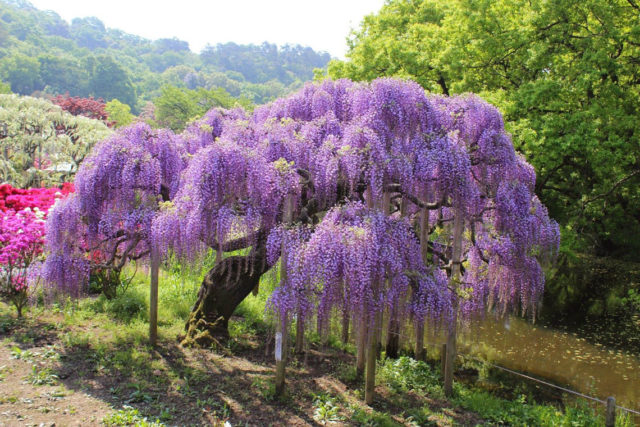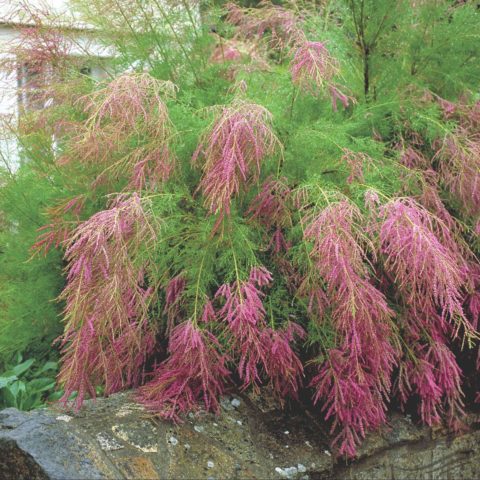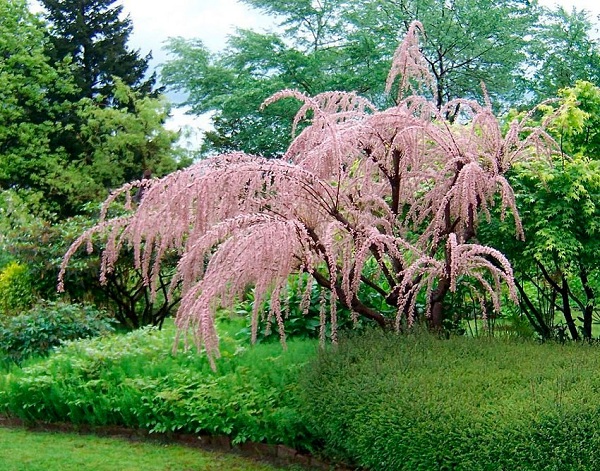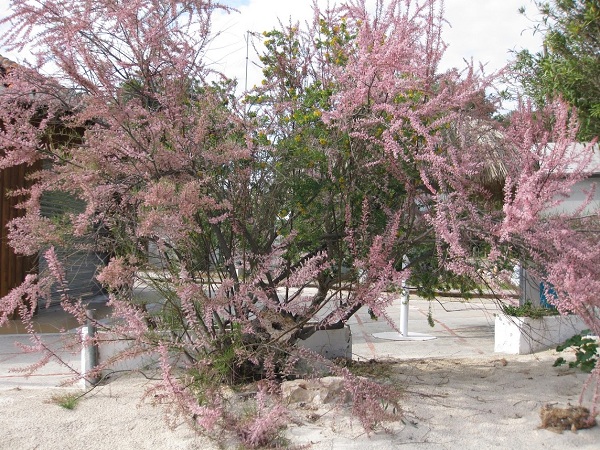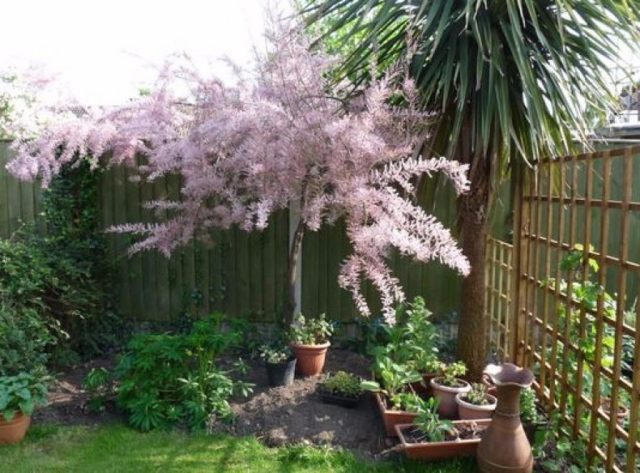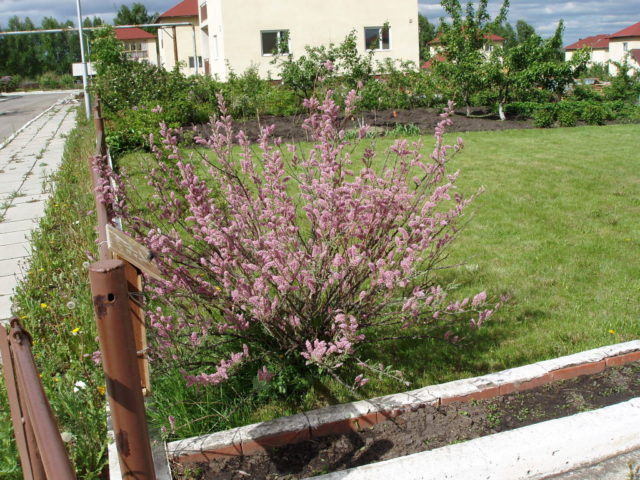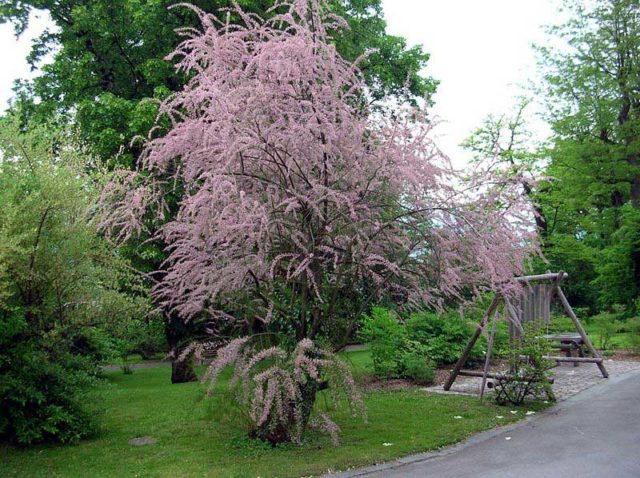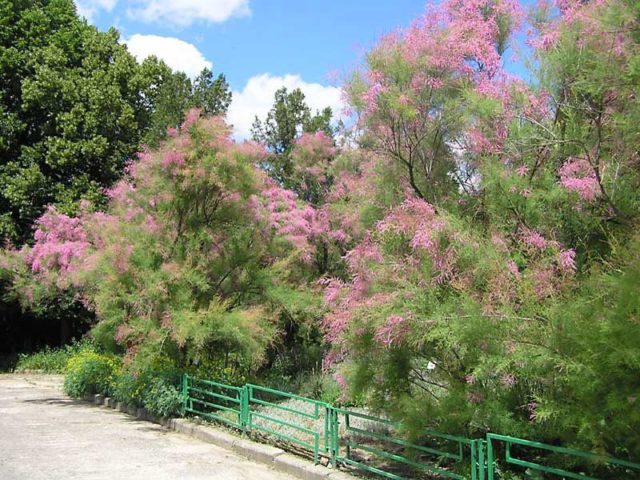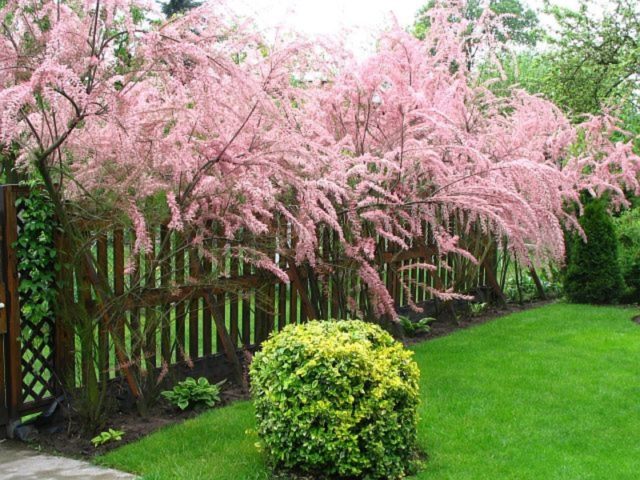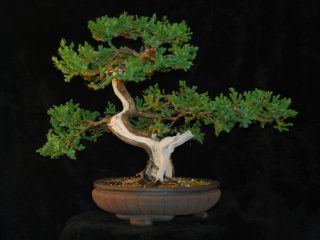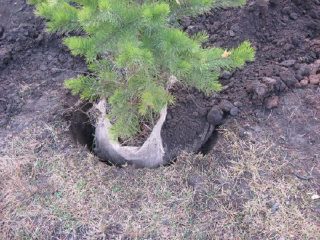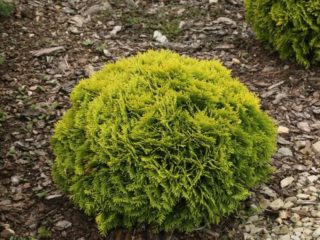Content
Tamarix in landscape design, a photo and its description, as well as external characteristics, cannot be confused with other ornamental plants. The tree has many names and over 57 species that grow in the wild. Tamariks, or beads, are graceful during flowering and unpretentious to climatic zones. Due to its attractive appearance, it is used for landscape design in different directions.
What is the combination of tamarix in the garden
The tree is very unusual in appearance and shape. Among the openwork foliage in the summer, it blooms with a pink-purple inflorescence. Decorative beads are similar to a miniature tree with long branches, so it will be combined in the landscape only in certain styles and compositions. Its peculiarity is that it looks attractive both in a group planting and in a single one. Tamarix is easy to give the required shape or height, it is enough to cut it before the beginning of May.
In landscape design, a tree of medium height will be pleasing to the eye if you plant lavender around. The delicate combination of flowering plants is reminiscent of the Provence style. The landscape of the garden with a Mediterranean design is dominated by green and blue shades, therefore, for a change, beads of white and light pink are used to brighten up the composition. Large and tall tamariks are used for single planting in strict landscapes: loft, minimalism, Japanese style.
However, the beads are not compatible with a low hedge and too tall cone-shaped trees. It is not planted next to conifers, because their root system will dominate the plant. Also, Tamarix will not organically fit into the surroundings of a flower garden or a composition of fruit trees.
Creation of compositions depending on the type and variety
To create a harmoniously composed picture, designers and gardeners recommend using only some varieties of Tamarix. This is due to the adaptive characteristics of the varieties and attractive appearance.
Tamarix Branched - a tree with high bushiness, average height up to 1.5-2 m. It grows mainly on sandy beaches, along the banks of rocky rivers. Combines with shrubs of medium height: Blue Chip juniper, cypress, Dwarf pine, Glauka Globoza spruce. Beads of this variety are rarely used for decorative hedges, compositions of bright colors.
Grade Graceful - the complete opposite of Tamariks the Branching. A small decorative tree suitable for any landscape. However, do not plant among birches or willows. Blooming beads blend harmoniously into the green garden. Yew hedges with the Graceful variety look aesthetically pleasing. Also original are variations of a shrub with flower beds, where it will be surrounded by climbing plants. An example of using Tamarix in landscape design in the photo:
Features of the use of tamarix in the garden landscape
Usually, decorative trees not only complement the compositions, but also hide the irregularities of the style in the garden landscape. Decorative Tamarix with its flowering splendor smoothes the severity and excessive charm of bright styles.The peculiarity of growing this plant in the garden is that the roots of the beads can either dominate or coexist neutrally with other shrubs. That is why sandy or loamy soil is used to grow Tamariks with high bushiness. It is important to remember that the root system of neighboring plants should be located at a level of 20 to 70 cm of the ground surface. Therefore, shrubs of medium and small growth are planted around, regardless of the variety and belonging to the family.
Tamarix in compositions
High and medium varieties of ornamental shrubs with low bushiness are suitable for planting in the center of a flower bed. For complete harmony, plants should not differ much from Tamarix in color. The tree looks aesthetically pleasing on a spacious plot without any composition in any landscape style. In flower beds, you can rarely find beads, but in the Provence style, it is planted interspersed with lavender or juniper. Japanese-style rocky gardens are very popular, because in the landscape, beads emphasize the tenderness in the transitions of color shades. There are also domesticated species that can be grown in regions with a warm climate - they emphasize the aesthetics of an apartment greenhouse. Tamarix in the landscape design of the garden in the photo in a minimalist style:
Maintenance and pruning rules for the best result
Any landscape is suitable for Tamarix, but the location of groundwater should be at a level of 4 to 7 m. The decorative tree does not tolerate excessive moisture, therefore it grows well when irrigated 1-2 times a month. To complete the landscape design, young tamarix is often sheared, so the growth of the beads will accelerate. Enough 2-3 haircuts in the spring and summer season. Before preparing for winter, a standard sanitary pruning is carried out. In the northern regions, it is customary to cut off all flowering branches; otherwise, Tamariks can throw off the excess on its own.
Conclusion
Tamarix in landscape design, photos and other interpretations are not able to convey the original look of the tree. Each variety is unique during flowering. It really does not need scrupulous care, you just need to pick up fertile soil and landscape with a design that can be completed by planting this plant.

